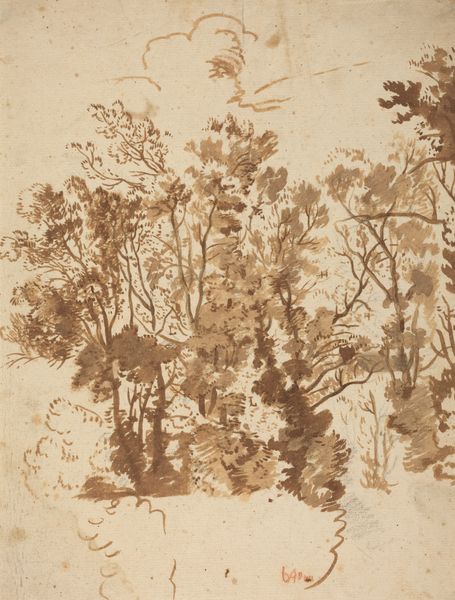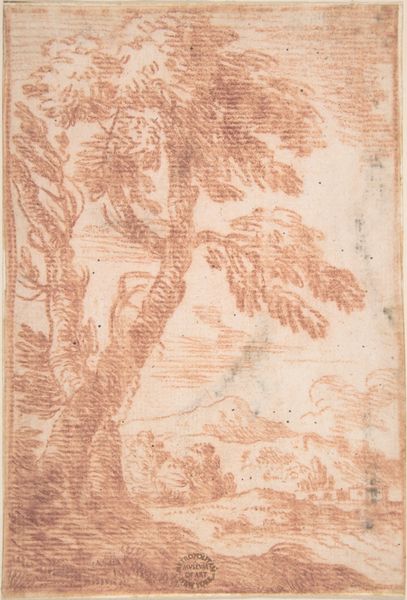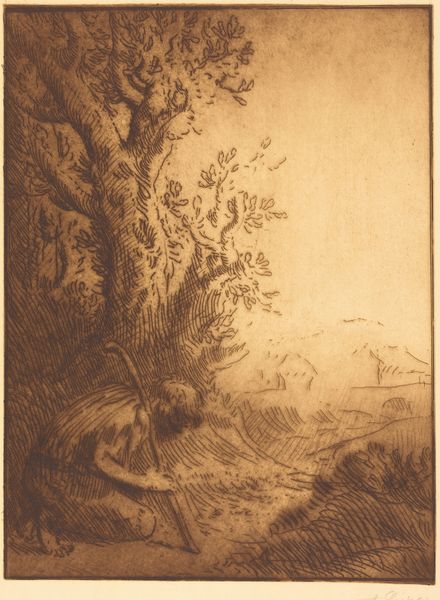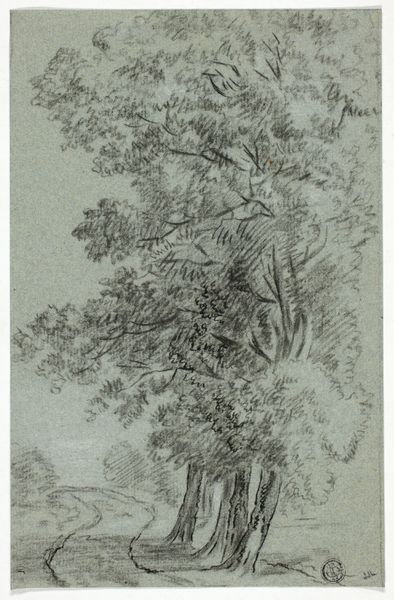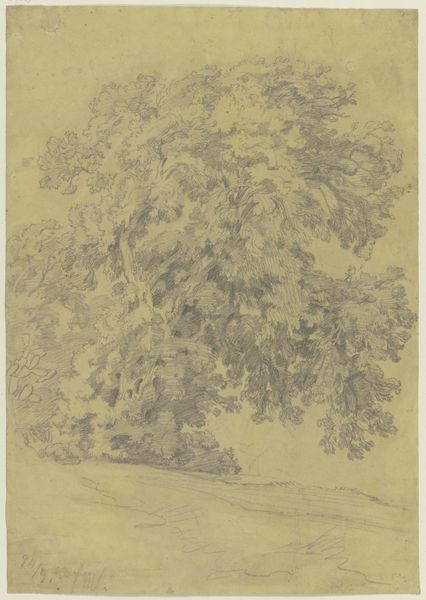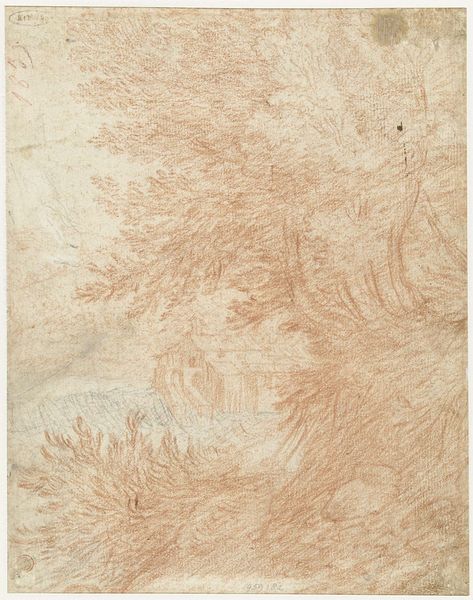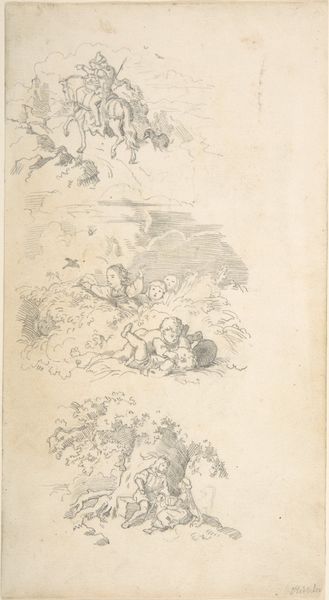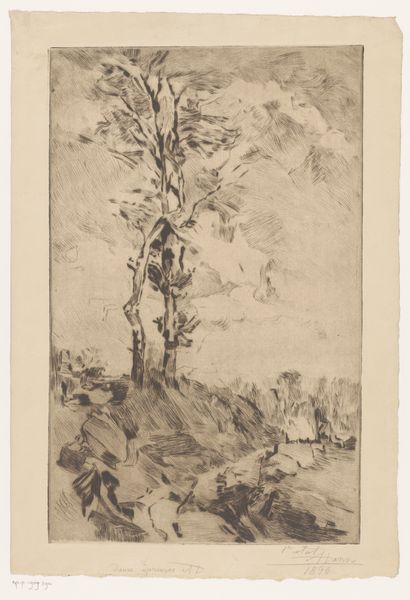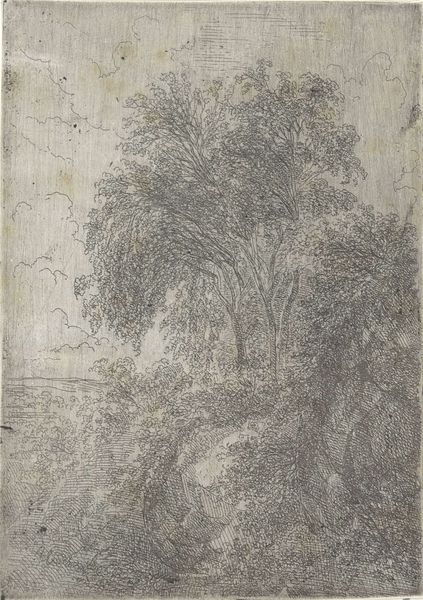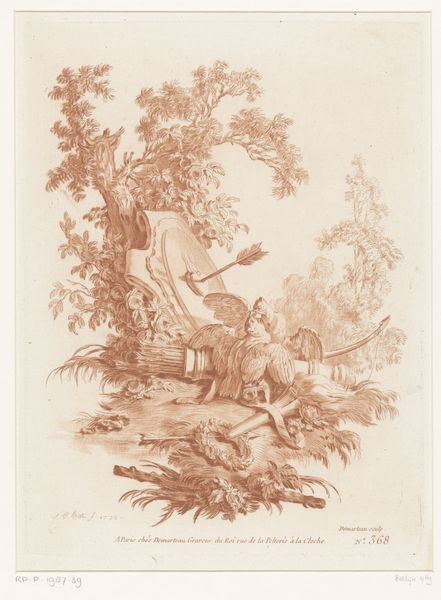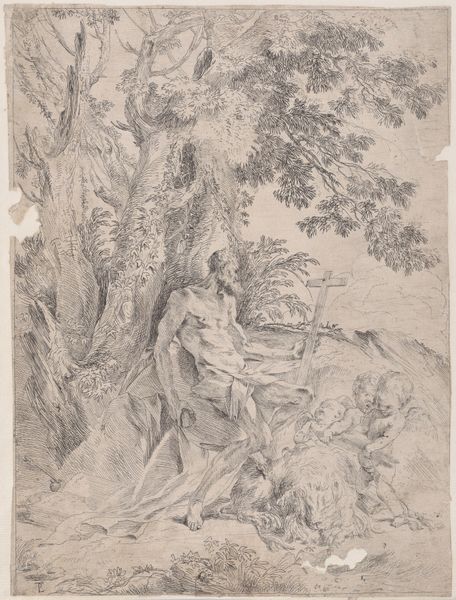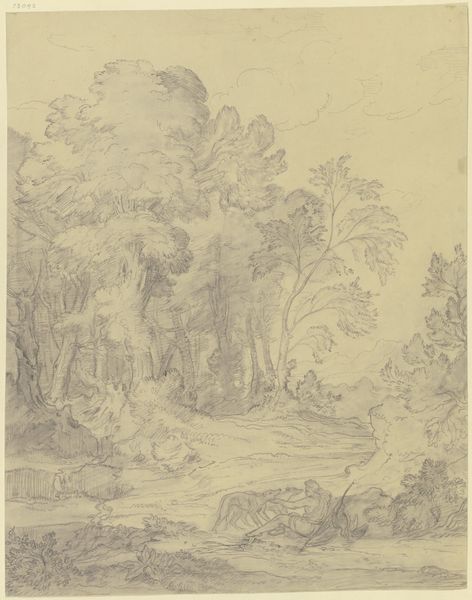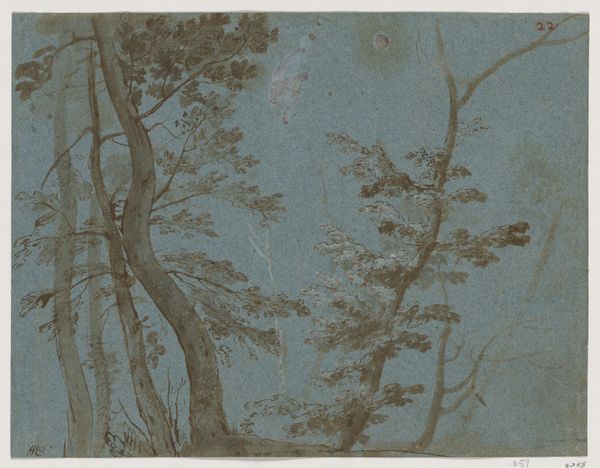
drawing, paper, ink
#
drawing
#
water colours
#
ink painting
#
landscape
#
paper
#
11_renaissance
#
ink
#
line
Dimensions: 51.4 x 36.6 x 0.4 cm
Copyright: Public Domain
Curator: Here we have a landscape drawing in ink and watercolour on paper from around 1515. Its author is currently unknown, and it’s housed here at the Städel Museum. Editor: My first impression is that it feels incredibly ethereal and dreamlike. The monochromatic brown washes lend it a sense of faded memory. Curator: It's interesting you say that, because landscapes in early sixteenth century Europe often functioned symbolically. It depicts a wilderness, yes, but through its lines we begin to see that there’s more beyond simply just representing nature itself. The flowing shapes evoke a journey. Editor: Absolutely. It almost begs the viewer to consider their place within this constructed vista, perhaps mirroring social constraints imposed upon those very same viewers by power structures in the world outside this picture's edge. Are the soft gradations an intentional parallel to social strata? Curator: It’s possible, but these wilderness settings frequently signified religious spaces or opportunities for reflection, pilgrimage being an apt comparison here; and with the introduction of nature motifs, such as the trees bending in what looks to be harsh winds, what does that say to the human conditions of that same time? Editor: True, we might also consider that a wilderness like this can be liberating. Anonymity in nature outside controlled social spheres permits new freedoms, however brief, in terms of self discovery and expression without censure, maybe for some even more than others? Curator: Yes, it’s tempting to view this almost like a liminal space in-between the more formally posed portraits of the era. An image where artists can experiment with materials while depicting more loose settings that evoke different conditions and emotions than more highly detailed artwork done with expensive materials, maybe? Editor: That really resonates for me, especially given its understated nature. Thinking about who has historically had the privilege to find escape, or even sanctuary in images like this is crucial as well. Curator: Examining landscapes through various historical frameworks enriches our understanding of these landscapes while engaging the different emotions they portray. Editor: Indeed, viewing art through the lens of history reminds us how crucial context remains.
Comments
No comments
Be the first to comment and join the conversation on the ultimate creative platform.
